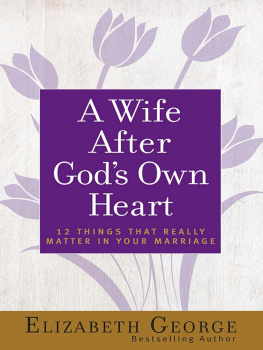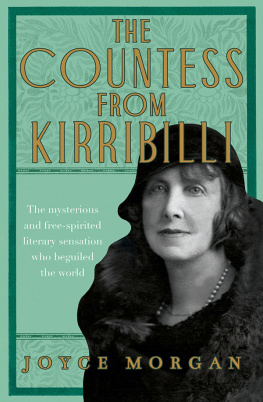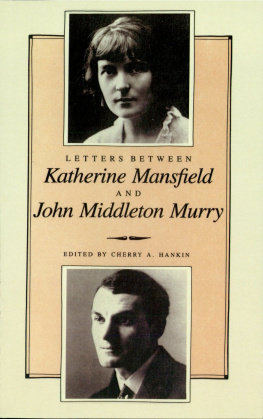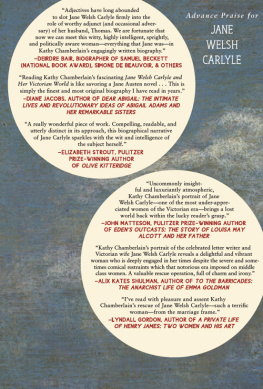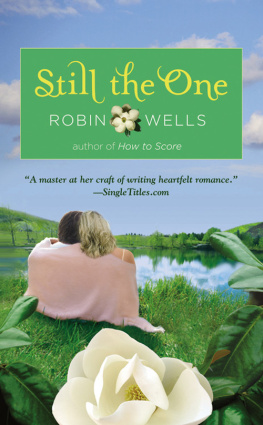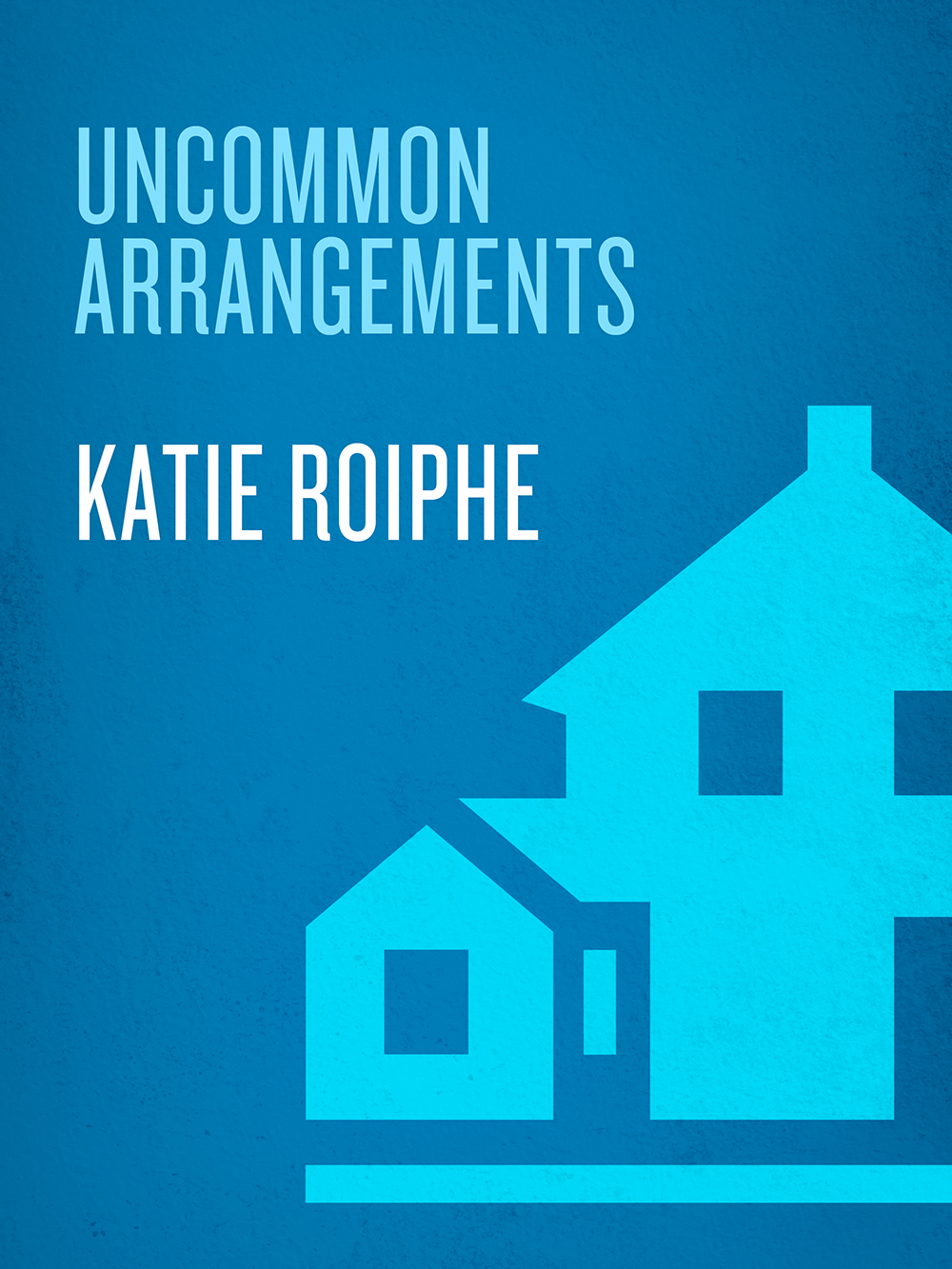
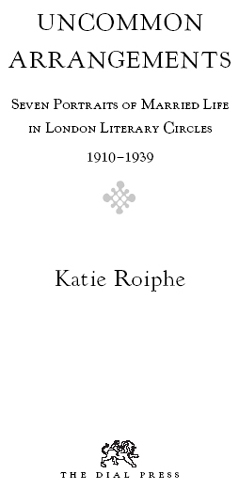
CONTENTS
For my mother and for Violet
MARRIAGE LA MODE
Dear Princess Bibesco, I am afraid you must stop writing these little love letters to my husband while he and I live together. It is one of the things which is not done in our world, wrote Katherine Mansfield to her husbands determined mistress in the first cool days of spring in 1921. Mansfield was groping her way toward a new etiquette, at a time when the couples she knew both were and werent married, and affairs both were and werent tolerated. That same month Dr. Marie Stopes opened Londons first birth control clinic on Marlborough Road; and the streets were filled with the new knee-length skirts.
I have borrowed the title of this introduction from Katherine Mansfields short story Marriage la Mode, which is a brutal send-up of a fashionable marriage of the time, and she borrowed it from John Drydens restoration comedy of the same name. When I talk about a marriage la mode, I mean a certain type of progressive marriage, occurring in literary circles in England, in the period from roughly 1910 to the beginning of the Second World War. This book offers a series of unconventional domestic portraits. The couples I have chosen were more than usually involved in questions of freedom and attraction. Their relationships were depraved or innovative, depending on ones point of view, and they tried to solve the problem of intimate relations in more or less creative ways.
I admit that my interest in these lives is not purely the interest of a scholar. Rather, it is largely selfish: What can they tell me? What can they teach? In some sense, what I am after is the distilled wisdom of decades lived, of mistakes made, of love stirred by time. There is, after all, something majestic in witnessing the entire sweep of a marriage, in seeing a note sent in the mail, a hidden passage scrawled into a diary, a photograph of a couple drinking coffee in their garden. There were moments, in the course of my research, when I sat in the mahogany rooms of the library, immersed in letters and journals, pages so delicate now that pieces of them can crumble off in your hands if you are not careful, that I felt myself come close to something almost alive. I was watching misunderstandings bloom into bigger misunderstandings; I was watching friendship move inside of a marriage; I was watching early enchantments age. Granted, this is a way of reading that I learned in graduate school was unsophisticated, childish. This is a trick that we were taught to use on narcissistic young students to rope them in: to let them milk a text for what personal understanding they could, to ask greedily, What does it mean to me? And yet that is precisely what I wanted from the lives chronicled in this book. That is what I have always wanted from biographies. That is, no doubt, the real reason that I have read my favorite biographies three, four, even five times. And for this book, I wanted to go inside of a marriage, to look at the oily mechanism, to feel it in my hands, and see how it worked. When for instance I read Katherine Mansfields astonishing journal entries about her serious illness at the age of thirty-four, and how it taxed her ethereal, childlike relationship with John Middleton Murry, I felt myself approaching a piece of information that seemed important, a practical piece of knowledge I could use.
Out of a slew of possible marriages la mode, I have chosen as my subjects writers and artists, and one hostess with artistic leaningsin other words, those inhabiting the fringe of respectable citizenryin part because their marriages are interesting, and in part because they obsessively record and narrate their inner lives in ways that some people may find bizarre, and even distasteful. I have chosen some figures who are still quite well known, like the writer and social critic H. G. Wells, and the painter Vanessa Bell, who was Virginia Woolfs sister, and others, like Vera Brittain and Elizabeth Von Arnim, who are less well known now but were bestselling authors and influential figures of the time. In the end, many of the couples in this book raised their personal lives to the level of philosophy. They felt that their love affairs and marriages were themselves creative acts.
Some of the figures under consideration had radical theories about love, like H. G. Wells who saw himself in revolt against the definite sexual codes of the day and others like Vanessa Bell, fell into strange arrangements out of emotional necessity. Some like the bestselling memoirist Vera Brittain wrote newspaper articles about what she labeled her semi-detached marriage, and others like the famous hostess Ottoline Morrell simply tried to do the best she could with a compromised situation. The figures I have chosen were all part of loosely overlapping social circles, reading each others work, attending each others parties, and shrewdly observing each others relationships.
Wherever possible, my research draws on the memoirs and letters and articles of the children of these marriages, as well as friends, acquaintances, and casual observers, in order to flesh out the accounts of the people involved. Certain observers, like Virginia Woolf for instance, appear throughout, with a dry running commentary on nearly everyone I have described. At times, the candid exchange of information and opinion which might be dismissed as sheer gossip under normal circumstances, contains small gems of insight for anyone with a biographical interest in a marriage. On occasion, it has been tempting to condemn these messy, often unorthodox attachments, but I have tried to approach them with as much fairness as possible: Do some of these unusual arrangements work? Can the pain of betrayal be channeled into something that strengthens the tie between two people? Is it possible that some of these extraordinary arrangements are admirable, and more enduring than many ordinary marriages? That they were, as the art critic Roger Fry said of Vanessa Bells unusual mnage, a triumph of reasonableness over the conventions? Or were their efforts to romanticize unconventionality simply a defense against the limits of love? Was all of their free thinking simply a highly articulated cover for consummate selfishness? Or could it be said that they were trying to bang out a new, fairer contract between the sexes? In a series on marriage published in the Daily Express in 1929, Warwick Deeping wrote: I believe this period of ours is one of those seasons of questioning and of stress through which we shall come to a fairer conception of comradeship.
I have not attempted to encompass and exhaustively narrate an entire marriage in any of the chapters that follow. In his own group biography, Eminent Victorians, which was published in 1918, Lytton Strachey argued against typically baggy biographies with their slipshod style, their tone of tedious panegyric, their lamentable lack of selection, of detachment, of design, and aspired instead to a becoming brevity which excludes everything that is redundant and nothing that is significant. For him the art of group portraits was the art of selection, and I have taken that as my model, along with Phyllis Roses brilliant tour de force of domestic archeology, Parallel Lives. Of course, condensing decades of marriage is challenging, making sense out of an enormous barrage of emotional information is finally an act of interpretation, as is sorting through conflicting accounts; it may be important to say that I am telling these stories as they appeared to me. Each chapter is structured around a crisis in a marriage and how it is resolved or not resolved. In some cases the crisis is as large as life-threatening illness, and in others it is as small as a slightly drunken conversation over dinner that threatens the balance of carefully submerged emotions.
Next page

